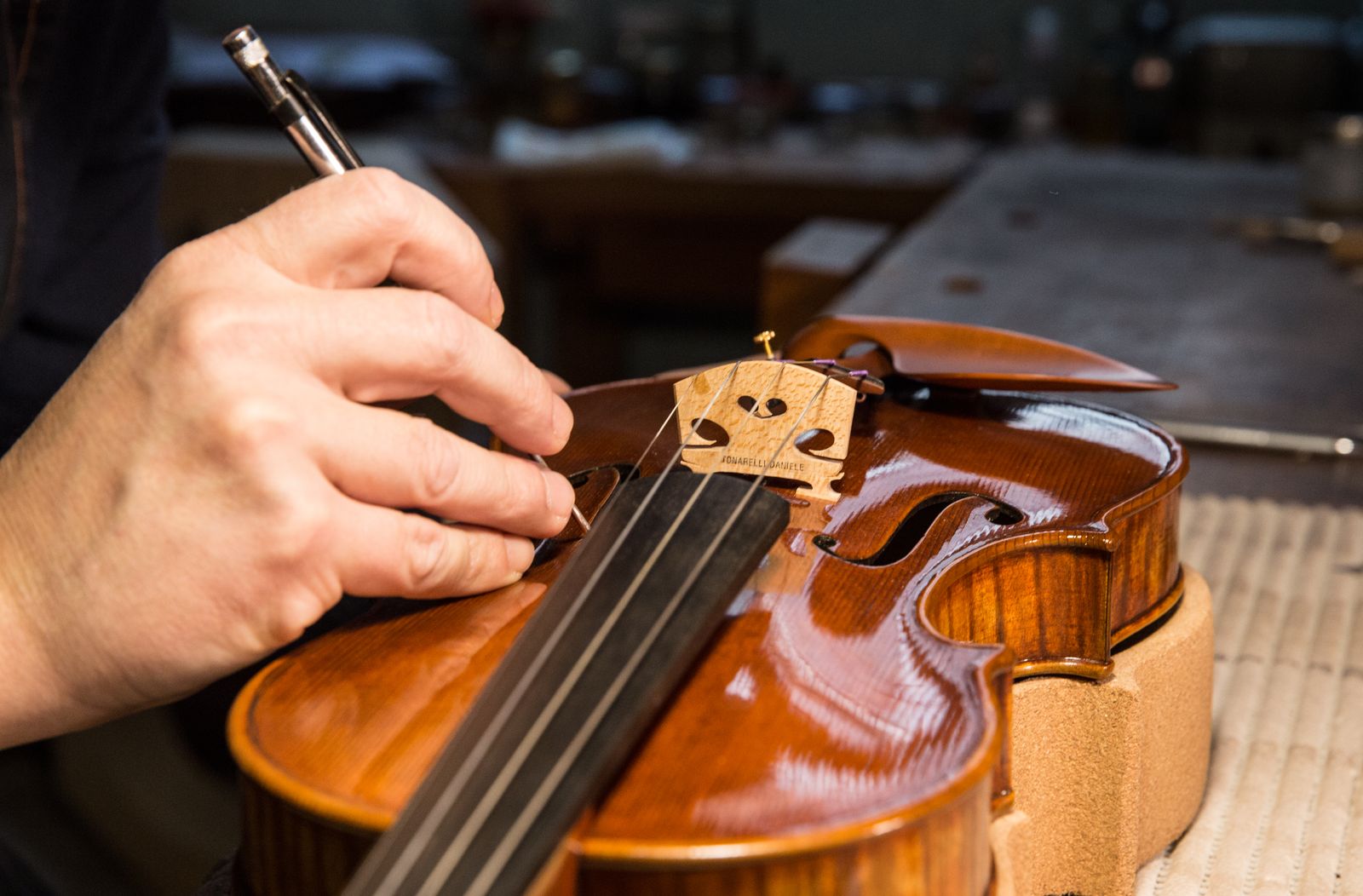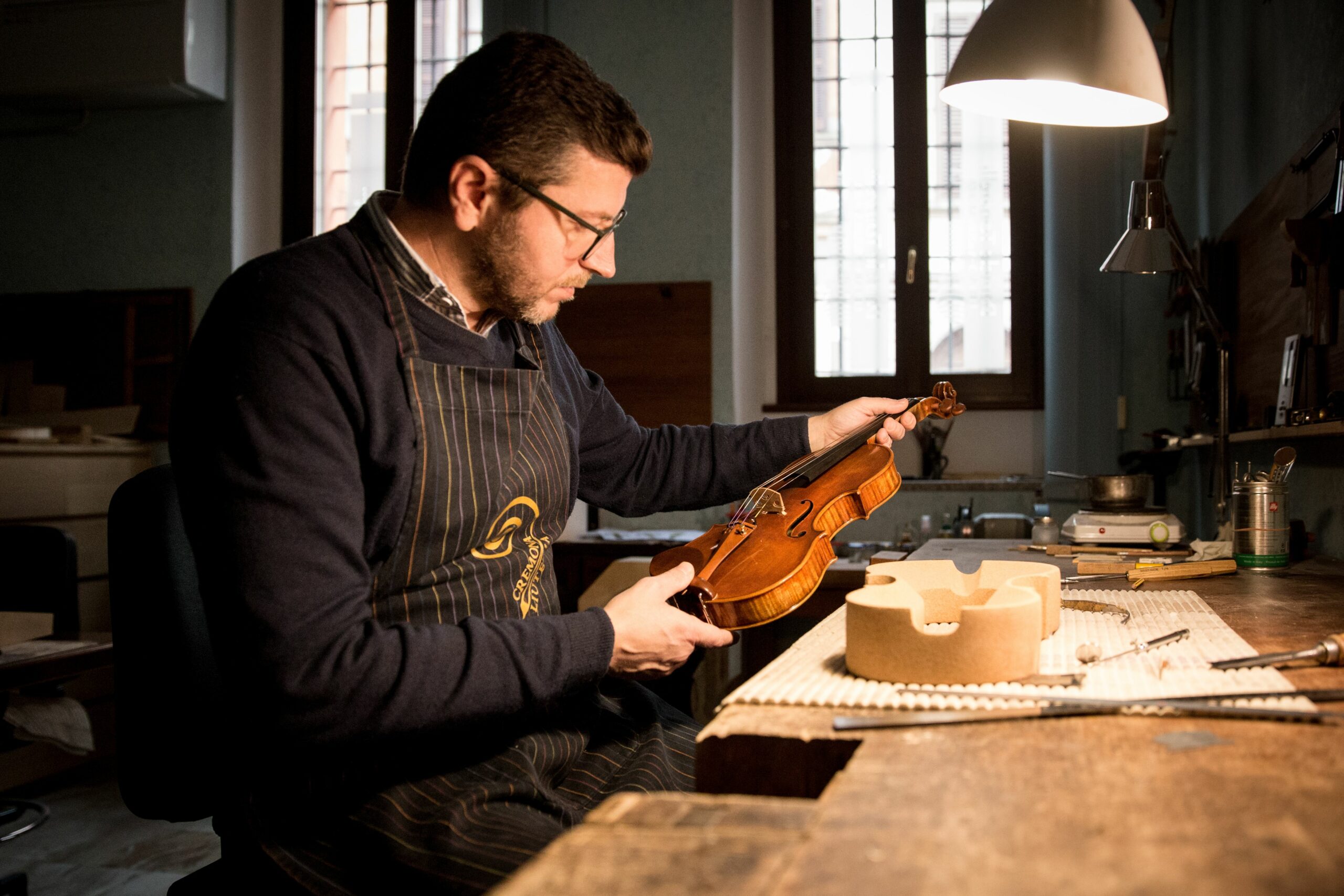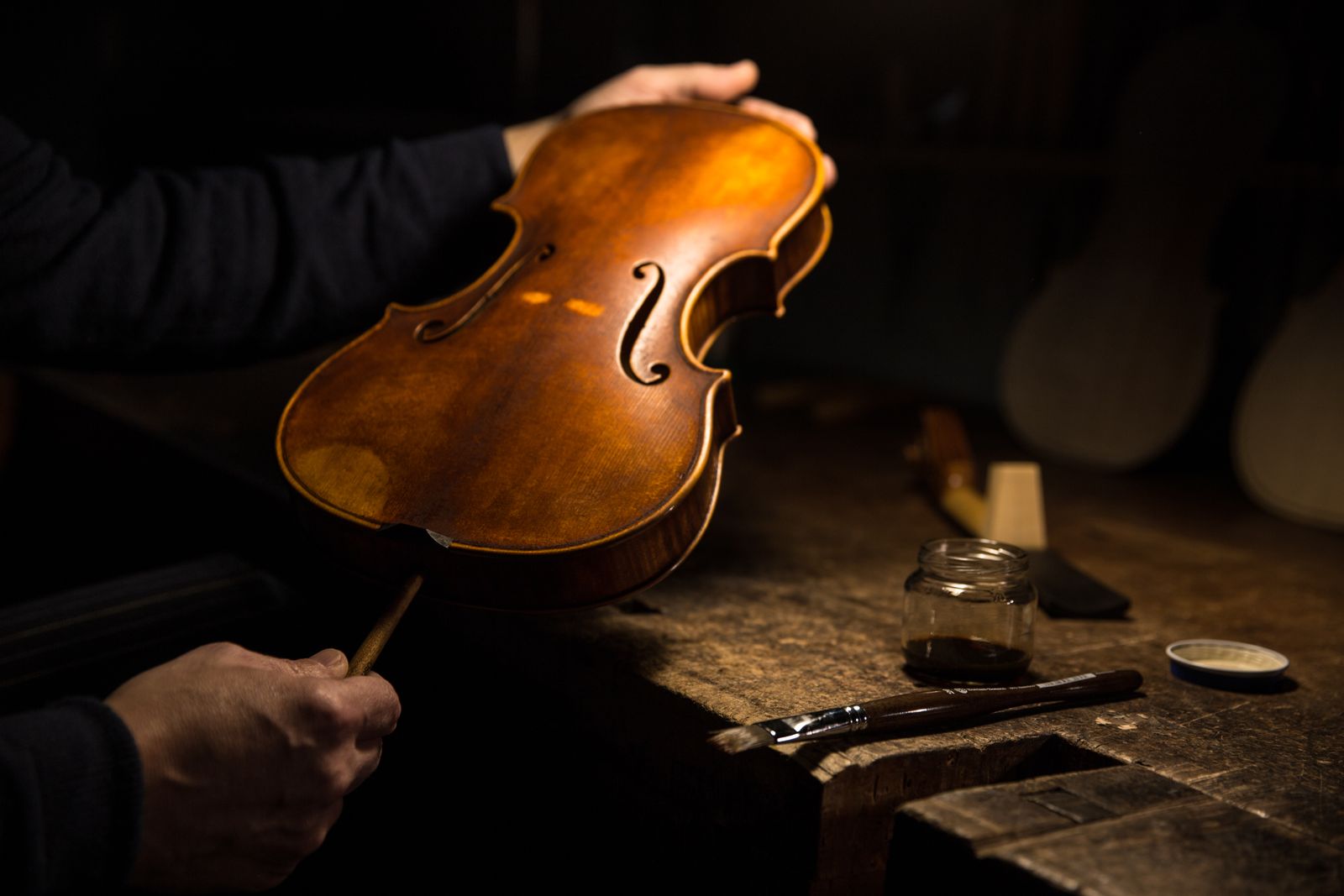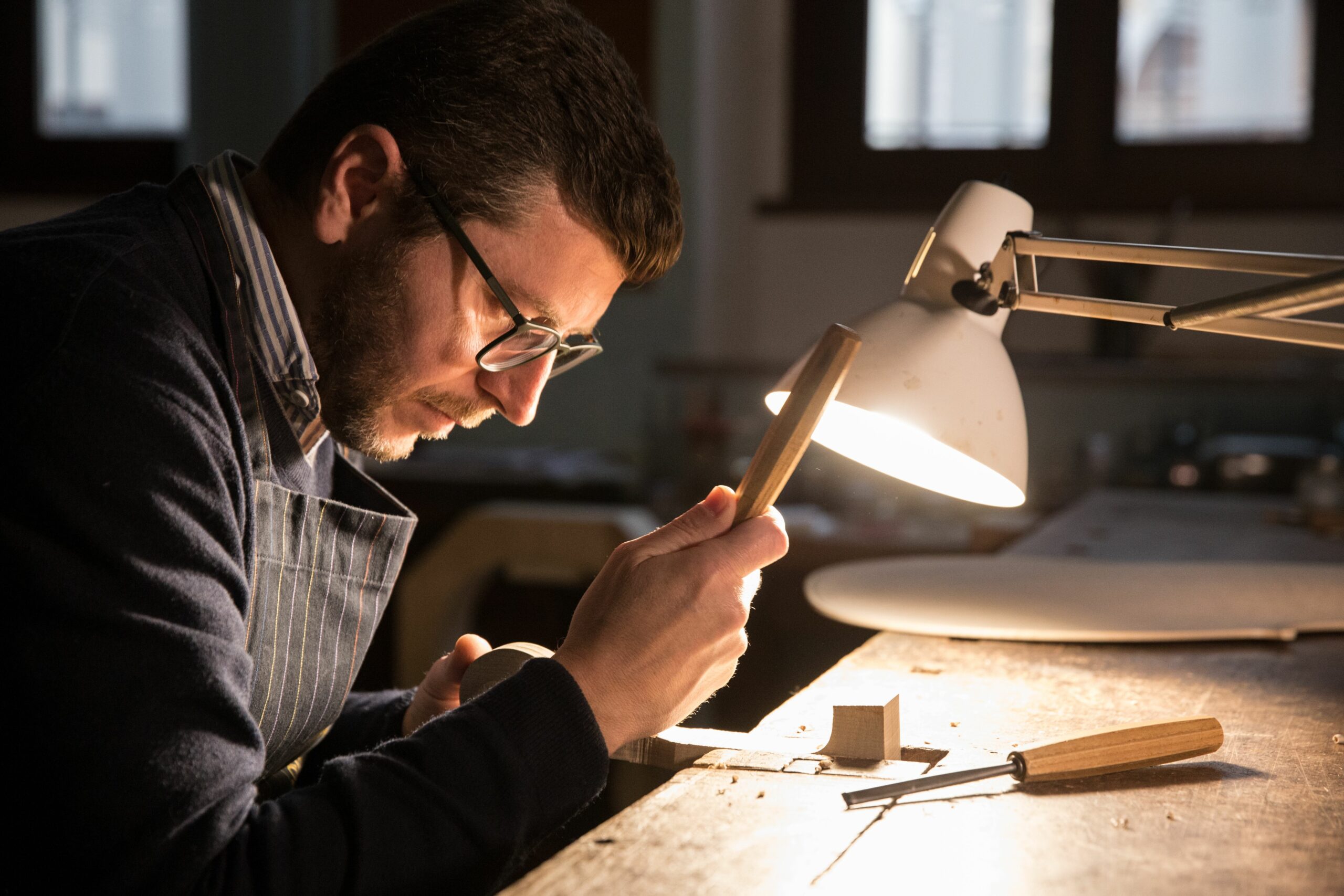The setup of the instrument for classical music is the final stage of the construction process. It may be considered as one of the most important stages as it involves complex procedures aimed at getting all the parts of the instrument to work together as a cohesive whole; if carried out correctly, it exalts all of the work performed in the previous stages. The setup includes finishing the neck and fingerboard; cutting and fitting the bridge; and positioning the soundpost. These operations can only be executed to perfection by a master violin maker, one who has honed his craft after years of practice and experience.
The finishing of the neck
In addition to aesthetic factors, potential customers also need to consider the feel of the neck before purchasing a violin. Does it feel comfortable? Does it allow the hand to easily glide from one position to the next? The skill and knowledge an experienced violin maker uses to finish the neck can ensure that its form, width and texture are able to satisfy the demands of a musician when he picks up the instrument and begins to play.
The soundpost and the bridge
The bridge transmits vibrations from the strings to the top and back of the violin, viola or cello. The shape and the thickness of the bridge greatly influence the sound and it must be carved so it enhances the sonorous qualities of the instrument; in addition, the feet must be adapted so that they perfectly conform to the shape of the belly. Before cutting the bridge, the soundpost must be fitted and positioned inside the instrument. The procedure requires both artisanal knowledge and workmanship to execute perfectly. The dowel shaped soundpost is in spruce. It is positioned inside the soundbox and held in place by the pressure of the strings – no glue is used. A special tool is used to insert the soundpost inside the body through the f-holes. Only expert violin makers have the skill to position the soundpost between the top and the back of the violin, fitting it to perfection. To find that special sound, the skilled maker moves the soundpost in various directions with respect to the bridge and the centreline. The soundpost is the heart of the violin, viola and cello. If it has been positioned correctly the instruments come to life.





